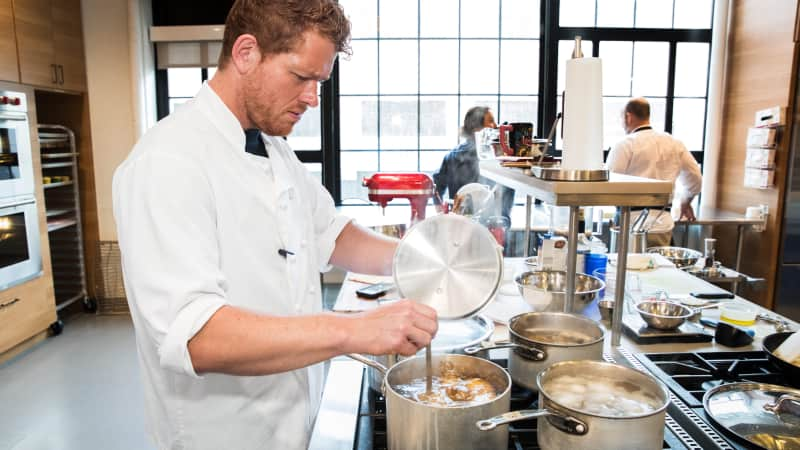Small Saucepans
Equipment Review
The saucepan is a kitchen essential, used to make everything from soup to custard. Which is best?
Last Updated Mar. 31, 2023. Appears in America's Test Kitchen TV Season 18: Grown Up Comfort Classics

We tested a few additional saucepans. Our winners remain the same.
Our favorite saucepan is the All-Clad D3 Stainless 4-Qt Sauce Pan and has been for decades. With its fully clad construction, this all-purpose pot makes perfect soup and custard. It’s also durable and comfortable to lift and maneuver. For a less expensive option, try the Tramontina Tri-Ply Clad 4 Qt. Saucepan. It performs nearly as well as our favorite but is less durable and has a slightly smaller cooking surface.
If you’re looking for a slightly smaller saucepan, useful for cooking rice, boiling water, heating leftovers, or cooking recipes for one or two, we also like the smaller versions of our favorites, the All-Clad D3 Stainless 2-Qt Sauce Pan and the Tramontina Gourmet Stainless Steel Induction-Ready Tri-Ply Clad Covered Saucepan, 2 Quart.
And if you’re interested in a smaller nonstick saucepan, we have a full review here.
What You Need to Know
Cookware doesn’t get much simpler than a stainless-steel saucepan: It’s basically a steep-sided bowl with a handle and a lid. But it also doesn’t get more important, since this is the vessel you’ll use to prepare everything from soups and sauces to pasta and grains to custard and puddings. And when it comes to performance, we’ve found that the differences between models can be surprisingly significant.
What Size Saucepan Should You Get?
We think that a stainless-steel saucepan with a capacity of 4 quarts is the best all-purpose size for most cooks. It’s a little less than half the size of our favorite Dutch oven, giving you a handy medium-size vessel in which to make a wide variety of foods.
Consider a 2-quart saucepan if you cook for one or two people or just want a smaller but still durable saucepan that will let you warm up leftovers, make small batches of soup or rice, or heat milk or water.
Are Expensive Saucepans Worth the Money?
Yes, up to a point. Over the decades, we’ve tested dozens of saucepans in a wide range of prices. We’ve found that less expensive saucepans are often less well-made and less durable, warping or denting more easily or having handles that loosen over time. They can be too heavy or poorly balanced, making them difficult to lift and maneuver, or too lightweight, making them prone to warping. And they have other design flaws that make them perform less well.
Our favorite saucepan costs more but is worth the investment. It performs better than cheaper models, is easy to handle, and is much more durable—it will last a lifetime if you treat it right, saving you money in the long run. In our opinion, you don’t have to spend more than what our top choice costs—fancier, more expensive five-ply models won’t perform better and will be heavier...

The mission of America’s Test Kitchen Reviews is to find the best equipment and ingredients for the home cook through rigorous, hands-on testing. We stand behind our winners so much that we even put our seal of approval on them.

Lisa is an executive editor for ATK Reviews, cohost of Gear Heads on YouTube, and gadget expert on TV's America's Test Kitchen.

This is a members' feature.